Elizabeth Kawaʻa
Ka hele ʻana i ka mākeke
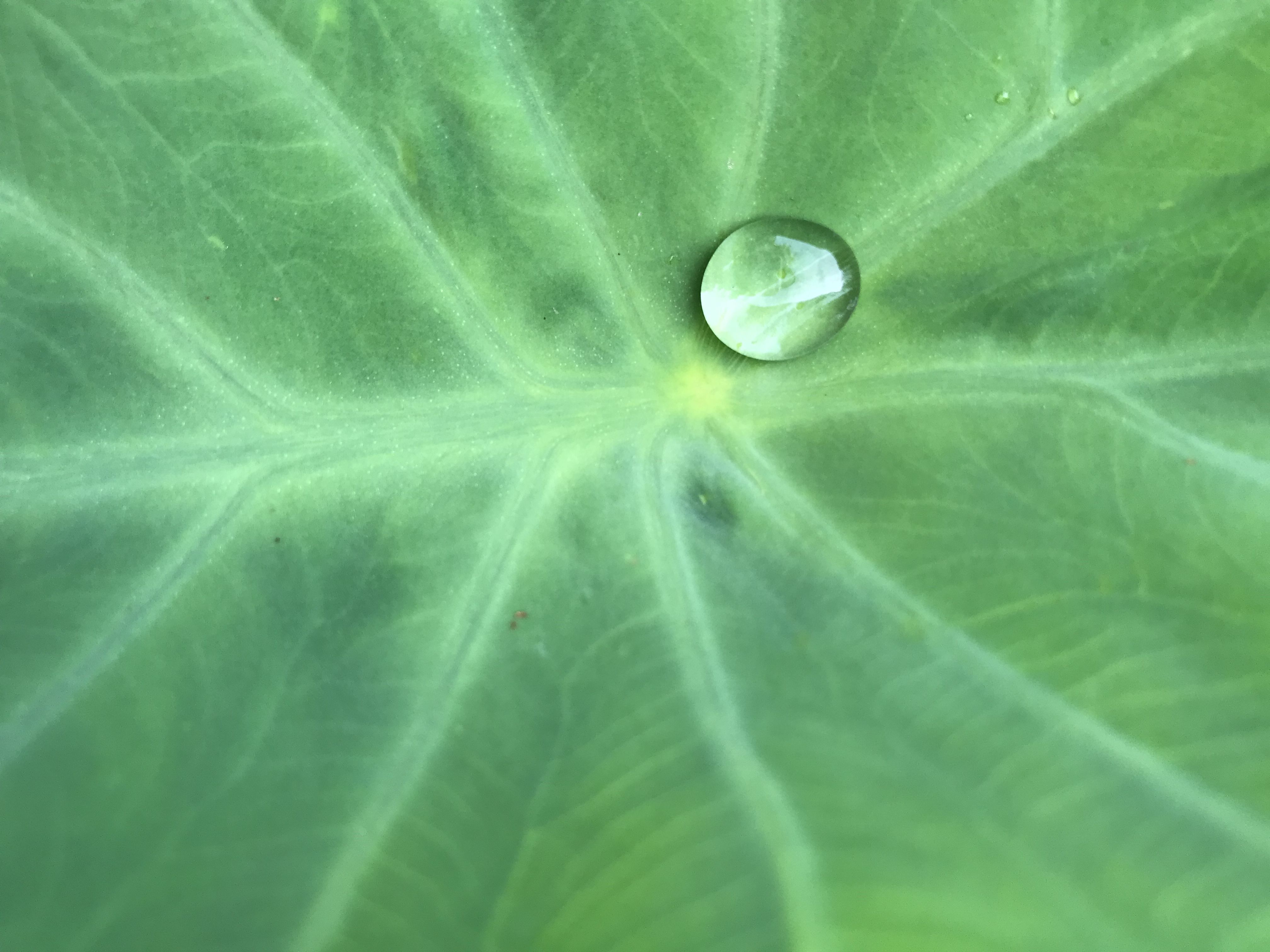
Mānaleo Series
These short clips of native speakers on Ka Leo Hawaiʻi talking about their lives and practices are invaluable windows into our past, our language, and ourselves. Our mahalo kūhohonu goes out to Larry Kimura and Puakea Nogelmeier for their foresight in preserving the voices of these hulu kupuna.
Listen and read along:
1. Press "listen in browser" or the orange arrow on the sound file below (make sure your sound is up).
2. Scroll down and read along in the language of your choice.
3. Repeat as needed.
4. Remember to select "listen in browser" to stay in this site.
Elizabeth Kawaʻa talks about walking from Waiāhole to Honolulu to sell their paʻiʻai at the market.
EK: A ka manawa ia ma mua, hele ka poʻe kahiko, hele ka poʻe huhuki kalo, kahu, kuʻi, pau, wili i loko o ka lāʻī, kau i luna o ka lio, lawe ʻia mai a Honolulu nei.
LK: Ahhh.
EK: A hoʻomaopopo ʻoe i kēlā, kēlā hale, uh what you call, ironworks.
LK: ʻĒ, ʻē.
EK: A, kēlā, kēlā pā liʻiliʻi. Ma leila ka mākeke ma mua, i ka wā kahiko.
LK: Pehea ʻoukou, hele mai nō i ka mākeke?
EK: Hele mai mākou i leila, lawe mai i ka ʻai. Hele wāwae.
LK: ʻEā?
EK: Hele wāwae! Kau ka ʻai i luna o ka lio, hele wāwae.
LK: Mai Waiāhole mai?
EK: ʻAe, ʻae. Waiāhole, Waikāne.
LK: A i ke kaona nei?
EK: Hele wāwae. Hele a kahi hoʻomaha, hoʻomaha. Hele a kahi hoʻomaha, hoʻomaha. Ā haʻalele iā Waiāhole hapalua hola ʻelua, hiki i Honolulu hapalua hola ʻewalu.
LK: Kakahiaka?
EK: Kakahiaka.
LK: Auē no hoʻi.
EK: Kēlā manawa ʻaʻole hana i ka… hoʻomaka ʻia ʻana o kēlā alanui e hana. 101, mai Honolulu.
LK: Aloha nō. Kēia manawa kau nō ʻoe ma luna o ke kaʻa.
EK: Kēia manawa kau hoʻokahi i luna o ke kaʻa.
LK: A ʻo ka ʻai, he kuʻi lima nō. Kuʻi ʻoe?
EK: ʻO ka ʻai, kuʻi lima.
LK: Mau paona nō?
EK: Ka paona…ʻo ka nui o ka ʻai makemake ʻia e hoʻouna mai, a pēia ka nui o ka ʻai i lawe ʻia mai.
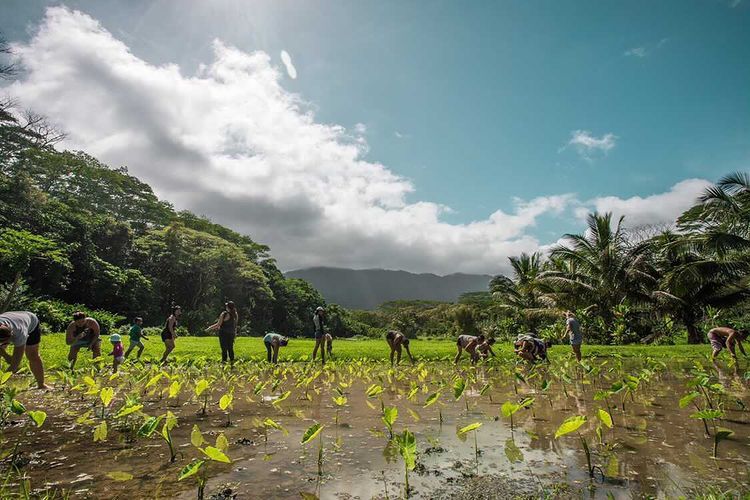
Hanale Bishop's loʻi in Waiāhole, 2017. Photo: Justyn AhChong.
Unuhina (Translation):
EK: In the past, the old people would go, they’d go pull kalo, cook it, pound it, when that was done they’d wrap it in tī leaf, load it on the horse and it was brought here to Honolulu.
LK: Ahhh.
EK: You remember that, that building, what you call, ironworks.
LK: Yes, yes.
EK: Yes that, that small area on the grounds there. That’s where the market was before, in the olden days.
LK: What about you folks, would you go to the market?
EK: We went there and took the pounded kalo. We walked.
LK: Really?
EK: We walked! Put the pounded kalo on top of the horse and walked.
LK: From Waiāhole?
EK: Yes, yes. Waiāhole, Waikāne.
LK: To town here?
EK: On foot. We’d go to a resting spot, rest. Got to the next resting spot, rest. We’d leave Waiāhole at half past two and get to Honolulu at half past eight.
LK: In the morning?
EK: In the morning.
LK: My goodness!
EK: At that time, there wasn’t work…they hadn’t started work on the road yet. The 101, from Honolulu.
LK: That’s really something. Now you just get in your car.
EK: Now you just get in the car by yourself.
LK: And the kalo was pounded by hand?
EK: The kalo was pounded by hand.
LK: Would you take several pounds?
EK: The poundage, the amount of pounded kalo that was desired, that’s how much was brought over.
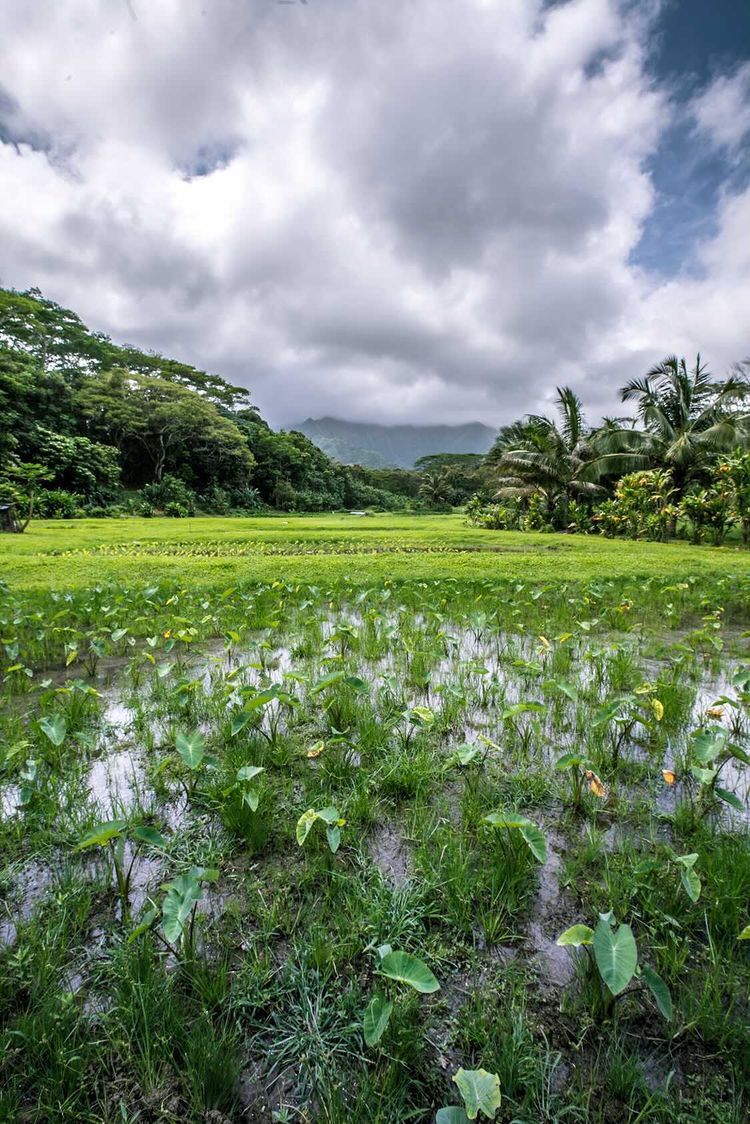
Hanale Bishop's loʻi in Waiāhole, 2017. Photo: Justyn AhChong.
He ʻĪnaʻi
It is hard for most of us to imagine life before major roads cut through Oʻahu's beautiful Koʻolau range. They have brought ease of travel to residents while also allowing the spread of development. It seems every modern convenience is a double-edged sword.
Elizabeth Kawaʻa, a kupa of Oʻahu who saw Kauikeaouli as a child, traveled traditional pathways with her family long before asphalt roads were made. It was a six-hour journey on foot to Honolulu, with horses and donkey's carrying their hand-pounded kalo (paʻiʻai) all the way to Honolulu.
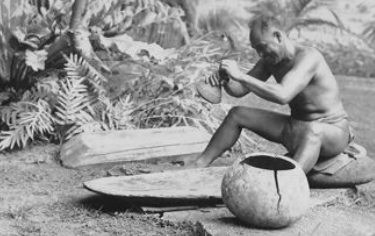
Fortunately for kalo farmers today, such as Hanale Bishop, whose loʻi are shown here, there are trucks and roads that can help transport their kalo, paʻiʻai, and poi to the many people who need and want it. Mahalo iā ʻoukou a pau, e nā mahiʻai, ka hānai ʻana i ka lāhui i ka ʻai kupuna. It's beautiful to know that the rich history of farming, of which Elizabeth Kawaʻa is a part, is being kept alive by folks today.
One does wonder, though, what it was like to watch the sky change colors with the sunrise while crossing the Koʻolau on foot in the hau kakahiaka (early morning dew) and seeing the Kona side of the island open out before you as the day dawns. There must have been some magic on those long, early morning walks.
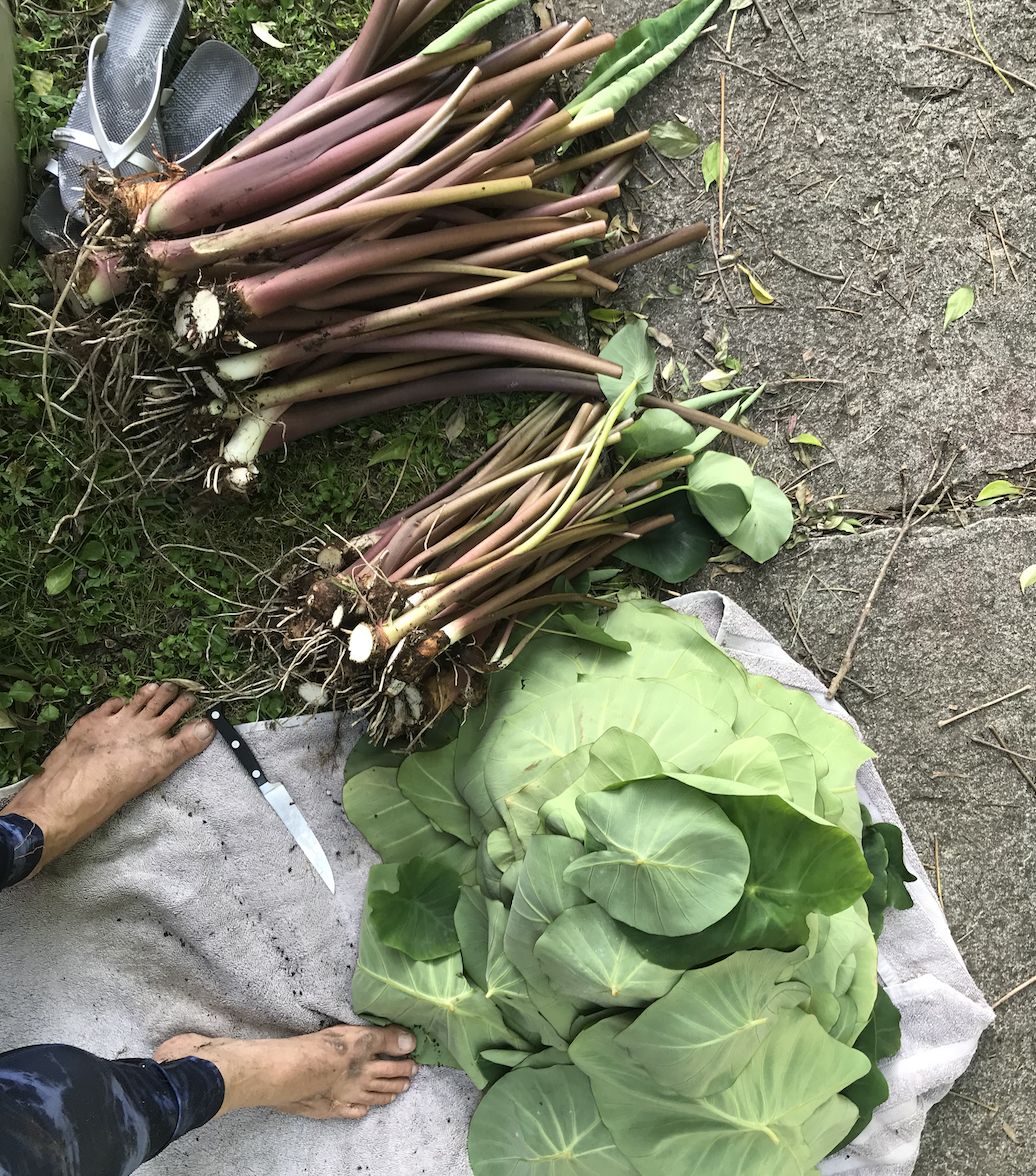
Na Hina Kneubuhl i kākau a hoʻonohonoho i kēia moʻolelo. Mahalo nui iā Helena Bakutis i ke kōkua ʻana mai ma ka palapala leo a me ka unuhi ʻōlelo.
These pieces are all working interpretations. Should you see a kuhihewa, kiko hewa, or have any sort of manaʻo to share, please email kauamelemele@gmail.com - Mahalo!
Click here to access the full recording on Kaniʻāina and learn more about this fascinating wahine.

Hanale Bishop's loʻi in Waiāhole, 2017. Photo: Justyn AhChong.
Hanale Bishop's loʻi in Waiāhole, 2017. Photo: Justyn AhChong.


Hanale Bishop's loʻi in Waiāhole, 2017. Photo: Justyn AhChong.
Hanale Bishop's loʻi in Waiāhole, 2017. Photo: Justyn AhChong.
